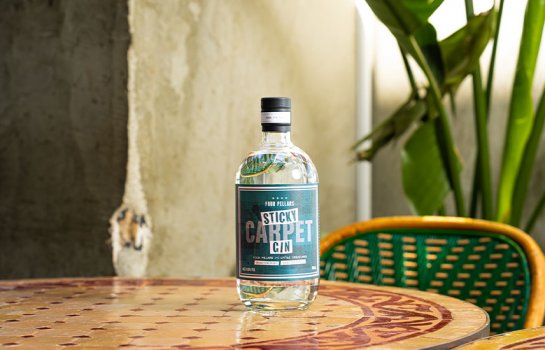
The Grocer: Taro
August means the start of taro season for Queensland, with the peculiar root vegetable available through to March. If you’re unfamiliar with the bulbous specimen, its brown fibrous outer is lined with rough ridges, while the inner white flesh is freckled with purple flecks.
Taro is the common name for the corms – the short bulbous underground plant stems – of the araceae family, with the colocasia esculenta the most widely cultivated variety. The vegetable is native to Southern India and Southeast Asia, and a staple food of many African, Oceanic and South Indian cultures. In Southeast Queensland and northern New South Wales, you’ll mostly stumble upon the Chinese cultivar at farmers markets and grocers. The perennial plant grows well in deep, moist, swampy soils and in paddy fields – it is one of the few crops that can also grow in flooded conditions. Generally the vegetable is harvested when the plant height drops slightly and the ‘elephant ear’ leaves turn yellow.
Taro is inedible when raw and considered toxic – the presence of calcium oxalate contributing to kidney stones and gout if the vegetable is not properly prepared. However, the toxin is reduced through cooking – boil with a pinch of baking soda or steep the roots in cold water overnight. You can also consume the cooked vegetable alongside milk or other calcium-rich foodstuffs to block the oxalate absorption. Both the leaves and the corm can be consumed, with the leaves a good source of vitamin A and C, and also containing more protein than the root – boil the leaves and stems twice to remove the bitter flavour. The starchy corm has a sweet nutty flavour thanks to the natural sugars, and contains three times the fiber of potatoes. It is also low GI, compared to potatoes, which are high GI.
The taro can act as a replacement for potatoes, and is commonly sliced and fried into chips. In many cultures it is cooked with coconut milk and meat or fish – try making this Egyptian taro and lamb stew, or this chembu curry. The root vegetable can also used in a surfeit of dessert recipes, like this Vietnamese black sticky rice with taro and caramelised banana, Hawaiian coconut taro layered cake and a sugar-tinted loaf of bread. Sample taro ice-cream on a warm day – try making your own or buy some from local producer Serendipity.
The Stumble Guide is our comprehensive Brisbane dining guide with more than 2400 places to eat, drink, shop and play.



